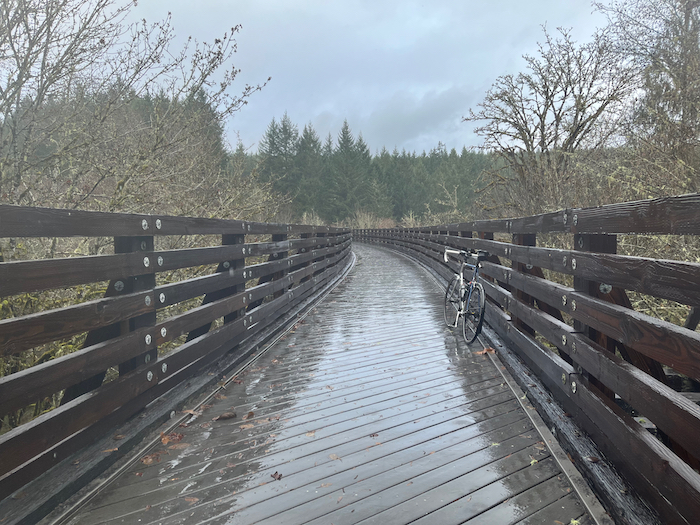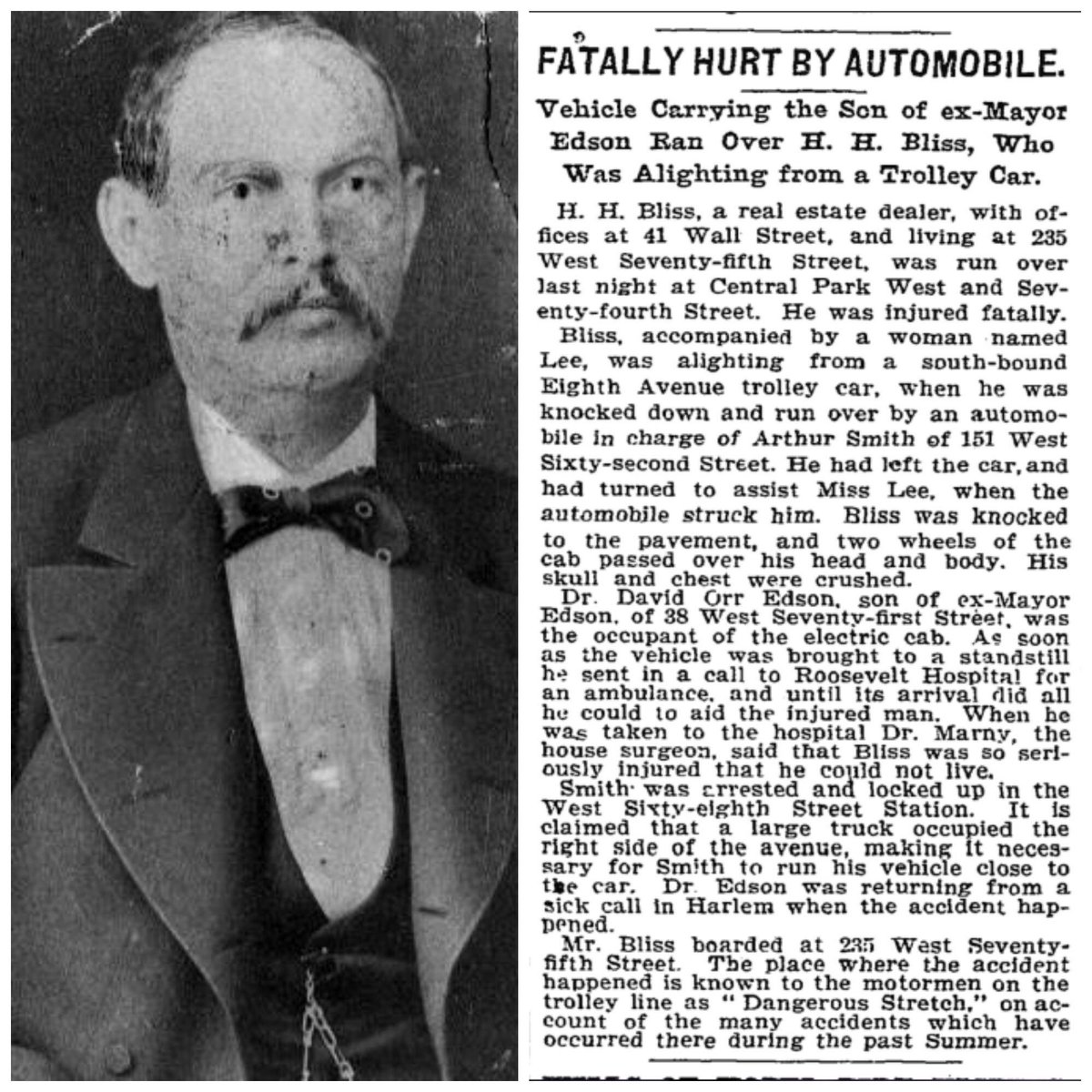I had never ridden a century before. My longest ride up until January 8 was a metric century (62 miles), last March. I did not know whether I was in the right shape or how my body would react to the hours. Sometime in the last year, I flipped through Bicycling‘s issue on mastering “the hundo.” I give anyone permission to slap me if I ever use the phrase “hundo” unironically. I did not know how long it would take, but I estimated eight hours. I wanted to leave from and end at home, so I designed a route that […]
Tireside Chat – poetry and prose reading next week
Next Wednesday, I’m giving a reading of poetry and prose at the US Bicycling Hall of Fame. Admission is free, and if that isn’t enough reason to check out the event, then below the flier I’ll tease you with a photo of one of the funkier bikes they have in their museum collection. Still no response from the organizers about whether I can give the reading while riding the bike around the room.
The Outspokin’ Cyclist: Cyclists don’t like concrete islands
Phillip Barron The Herald Sun Willetha Barnette, of Durham, rode her bike in traffic for the first time on October 4th. Encouraged by her friend Cynthia Ferebee to join the Critical Mass ride, a monthly group bike ride through the streets of Durham, Barnette said that she enjoyed the freedom to ride on the streets in safe numbers, but that she would not feel comfortable riding alone. As the group made its way down Anderson St, Barnette said, “it’s uncomfortable. Drivers don’t seem to be used to sharing the road. They seem annoyed, frustrated that we (cyclists) aren’t going as […]
The Outspokin’ Cyclist: Hybrid car pitch a step backwards
Phillip BarronThe Herald Sun September 14th marked the 108 year anniversary of the first pedestrian death at the hands of an automobile in the United States. On September 13th, 1899, Henry Bliss stepped from a streetcar on Central Park West, in New York, and was struck by a taxicab. He died of his injuries the next morning. The event was reported on the front page of the New York Times. In 2005 alone, 39,000 automobile crashes in the United States accounted for 43,000 deaths. Given the anniversary of Bliss’ death, it’s appropriate to think of September as an automobile awareness […]
Bike Lane point/counter-point
A few weeks ago, a local listserv debate over the Constitutionality of bike lanes devolved into a rather asinine comparison between vehicular separation and racial segregation. In an effort to raise the level of discussion over whether bike lanes are good for cyclists, local cyclist Steve Goodridge and I wrote point/counter-point Op-Eds for the Herald Sun. Enjoy. Lanes do their job Phillip Barron Guest columnist, The Herald-Sun Just two weeks ago, Main Street was one-way through downtown Durham. City officials closed the street Saturday and reopened it for traffic going in both directions. How do drivers know the difference? City […]
The Outspokin’ Cyclist: New Durham cabs are pedal-powered
On a recent Sunday, while I was dropping off some donated wheels and frames at the Durham Bike Co-op, two of Durham’s newest taxi cabs stopped by for repairs. MarcDreyfors parked his cab on the sidewalk, jacked up the front end to remove the front wheel, and brought the wheel inside the Co-op for aligning. After a few minutes in the truing stand, his wheel was straight, and he popped the front wheel back on his pedal-powered taxi cab. A pedicab, as it is known, is basically a giant tricycle. It looks like a regular bicycle in the front (with […]
The Outspokin’ Cyclist: Repaving N.C. not right for Durham
Phillip Barron The Herald Sun David Hartgen’s plan to repave the state of North Carolina might be accepted in some towns, but not in Durham. Hartgen, a professor at UNC-Charlotte, recently released a study of transportation planning that looks at urban areas around the state. His conclusions simply amount to statistically backed reasons why urban areas should reduce transit spending, divert saved funds to highway construction and road widening, and embrace the private automobile as the keystone species in the ecology of economic progress. The 200+ page study is available for download from the John Locke Foundation‘s website, and I […]
The Outspokin’ Cyclist: Taking on toxins is worth it
Some winter mornings, while riding in Cornwallis Road’s new bike lanes, I can smell Counter Culture Coffee roasting those fairly traded coffee beans two or more miles to the south. The same still air that pools summertime ozone over the region’s largest employment hub wafts the unique smell of coffee beans expanding in heat, releasing their caffeinated oils. Whenever I ride through one of those invisible, aromatic clouds, I breathe deeply. Problem is, I can also smell the exhaust from the surrounding cars at every intersection. No doubt, on-road cyclists are more vulnerable to their environments than drivers. It’s not […]
The Outspokin’ Cyclist: Ice puts focus on need for different kind of cities
Phillip Barron The Herald Sun DURHAM — Cafeteria conversation at work on January 31st revolved around the predicted ice storm. Bread, milk, and bottled water would be cleared off grocery store shelves by the time we left work that evening we all joked. We also guessed that the next day’s news would be littered with images of cars skidding off the road. It’s not that Southerners can’t drive in wintery conditions. Neither can the local transplants from New England or the midwest. No one can drive on ice. And since no one can drive on ice, the answer is not […]
The Outspokin’ Cyclist: Take time to unplug, be outside and watch the sunset
DURHAM — There was a year when I watched the sunset almost every evening. Across the street from the school I was attending at the time began a neighborhood of houses that had been built in the 1950s. These streets and dwellings brought unprecedented order to the post-war town, carving their grid-like stamp into Southern countryside. The streets parallel to the main road separating the campus from the neighborhood ran only four or five deep, and the last street had houses on only one side. The far side of the street faced an open pasture where a farmer kept cattle. […]



